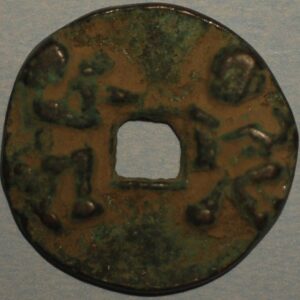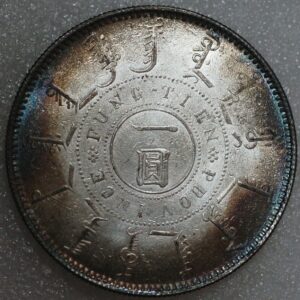Description
China 990-994 Chun Hua Yuan Bao Charm Emperor Tai Zong head straight Buda
(M341)
Weight: 7.74 grams
Diameter: 22.7 mm
Thickness: 2 mm
The rare bronze coin was cast during the years 990-994 of the reign of Emperor Tai Zong (太宗, 赵光义 976-997) of the Northern Song dynasty (959-1126).
The inscription is written in regular script (kai shu 楷书) and reads chun hua yuan bao (淳化元宝).
The radical (shui 氵), which resembles three vertical dots and is on the left side of the first character chun (淳) at the top of the coin, is “shortened” and does not extend all the way to the bottom of the character.
“Chun” character on common “Chun Hua Yuan Bao” coin
This may be easily seen by comparing the coin’s chun (淳) character with that of a “common” variety of chun hua yuan bao coin as displayed in the image at the left.
The coin is thus known to Chinese numismatists as the “shortened shui” or “shrunken shui” variety (suo shui ban 缩水版) and very few authentic specimens are known to exist.
According to legend, Emperor Tai Zong personally did the calligraphy for the chun hua yuan bao coin inscription. For this reason, the coin is known as “royally inscribed currency” (yu shu qian 御书钱).
Pengyang County is located in the territory once ruled by the Western Xia and large quantities of both Western Xia and Song dynasty coins have been excavated in the area.










